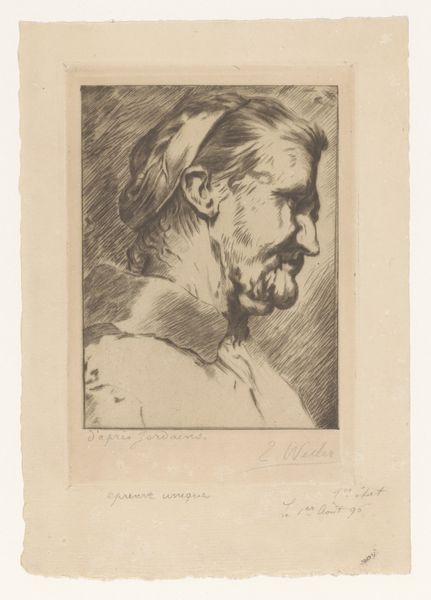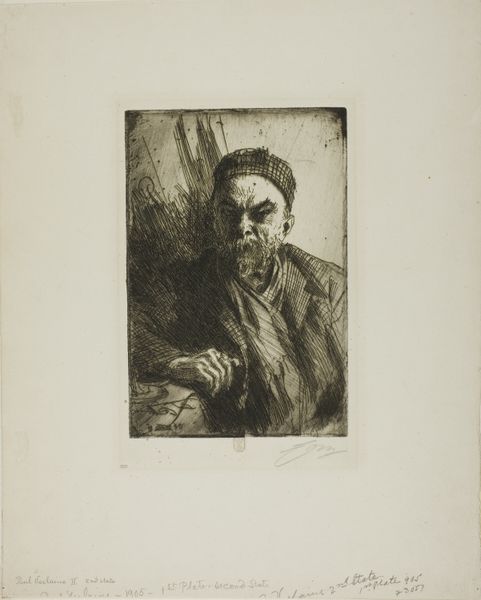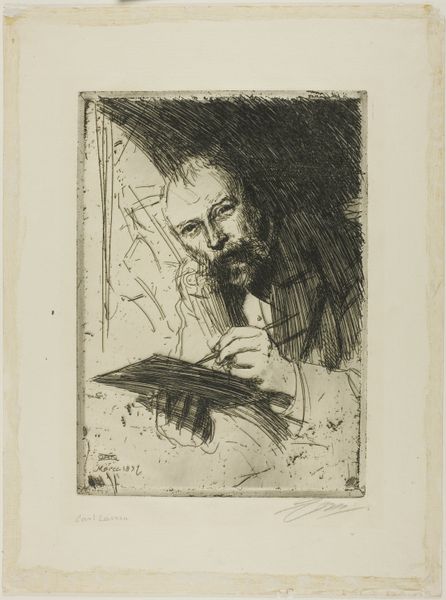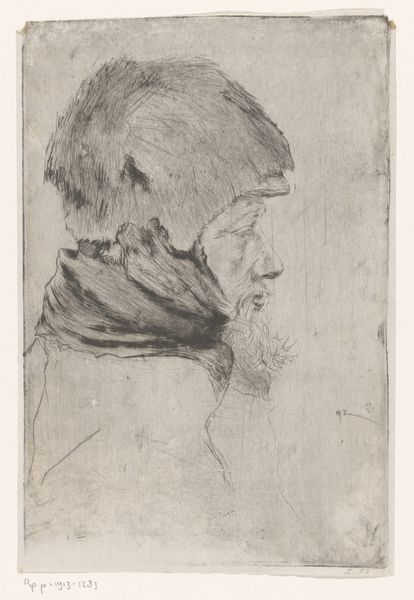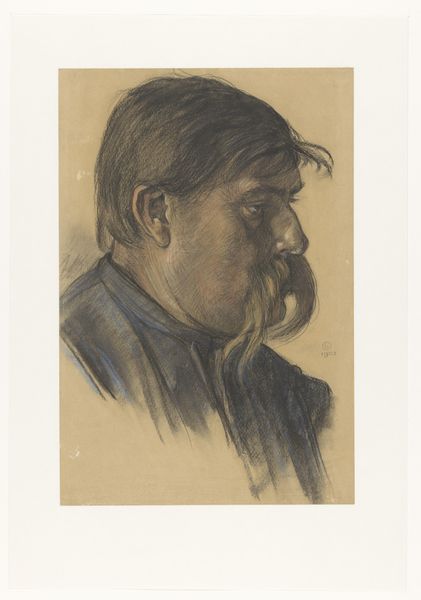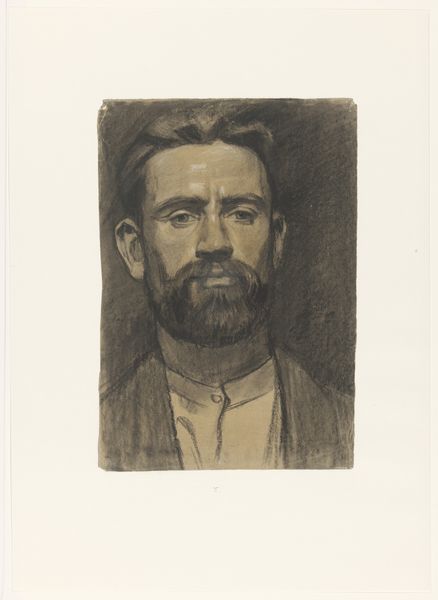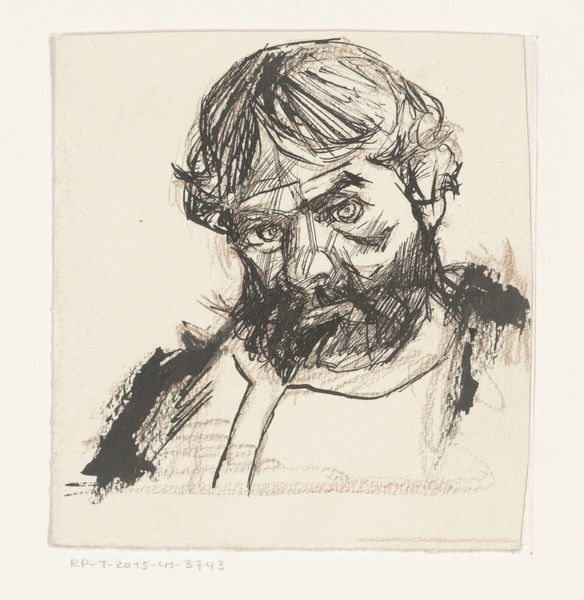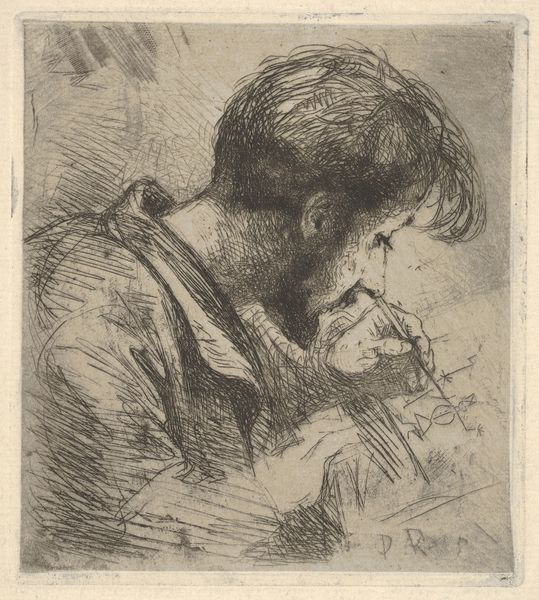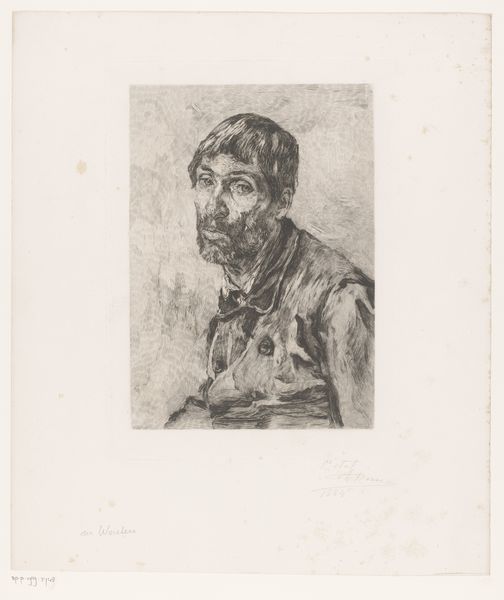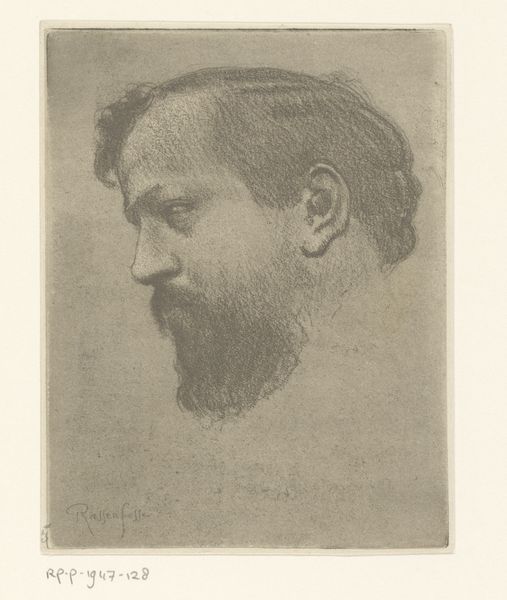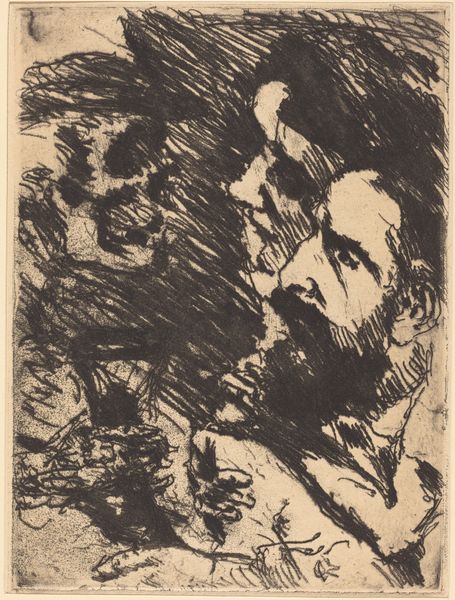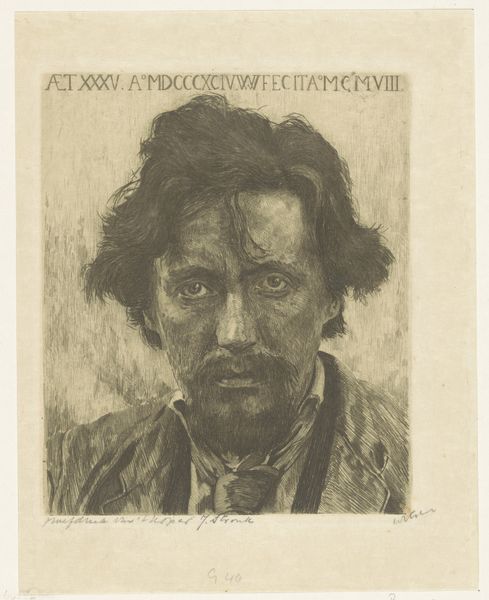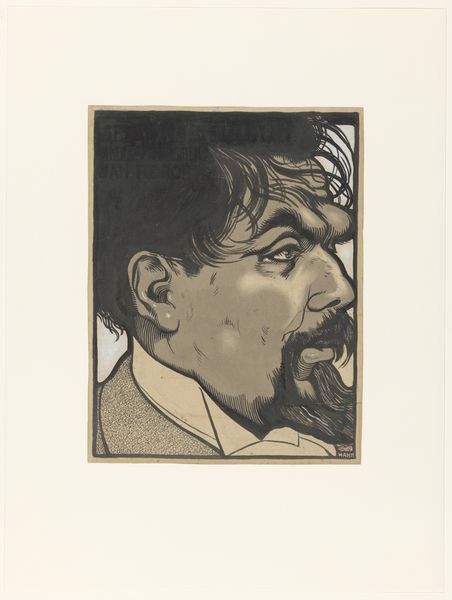
drawing, etching
#
portrait
#
drawing
#
etching
#
expressionism
Copyright: Public Domain
Editor: Here we have Ernst Ludwig Kirchner’s "Bildnis Professor Enrico Padua," an etching from 1923. The portrait is quite stark, the lines are really expressive and give it a somewhat melancholic mood. What do you see in this piece? Curator: It’s striking how Kirchner uses line to convey not just Padua’s likeness, but also a certain psychological intensity. The work exists within a context of societal upheaval in post-World War I Germany, and Kirchner, as an expressionist, seems to be capturing that feeling of disillusionment and alienation. Note how the angular lines almost dissect the professor's face. Do you feel this adds to the mood you perceived? Editor: Absolutely. There’s a tension between the detail in his face and the almost fragmented background. Is that tension part of what makes it Expressionist? Curator: In part, yes. Expressionism, especially in the work of Die Brücke artists like Kirchner, sought to portray subjective experience over objective reality. The fragmented background could symbolize the instability and uncertainty of the time, and Padua, though a professor, becomes a figure trapped in it. Look at the shadow on his face; how does that enhance your understanding? Editor: It makes him seem burdened, maybe even complicit. Almost as if he's reflecting on the role intellectuals play in society. Curator: Exactly! It pushes us to consider the individual within the larger historical forces. Art isn’t created in a vacuum, and expressionism is especially potent when considering social commentary. Editor: That’s given me so much to think about. Thank you. Curator: And thank you for your observations, that's why collaborative dialogues like this enrich how we understand artworks.
Comments
No comments
Be the first to comment and join the conversation on the ultimate creative platform.
